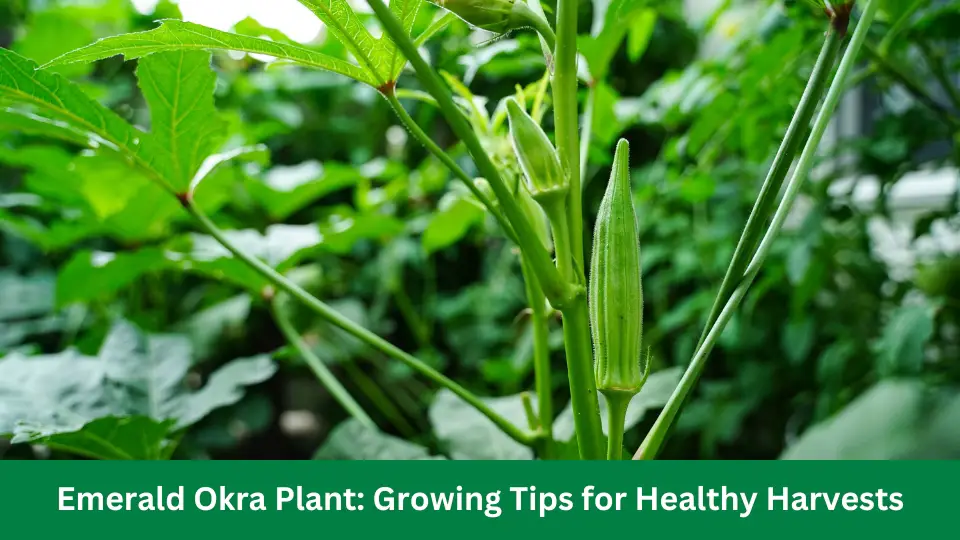The emerald okra plant, or Clemson spineless, is a popular warm-season vegetable in the Southern United States. Its vibrant green pods are used in various culinary dishes and are known for their tender texture and nutty flavor.
This plant is easy to grow, making it a favorite among home gardeners and hobbyists. Whether you’re a seasoned gardener or a novice, the emerald okra plant is an excellent addition to any garden. We’ll explore the characteristics of the emerald okra plant, how to cultivate it, and some helpful tips for a successful harvest.
By the end of this read, you’ll be equipped with all the information you need to grow your thriving emerald okra plants.
The Beauty Of Emerald Okra Plants
The beauty of Emerald Okra Plants lies in their striking appearance and versatile uses. These plants appeal visually to your garden with their vibrant green pods and offer numerous health benefits. Let’s explore the unique features and importance of growing Emerald Okra in detail.
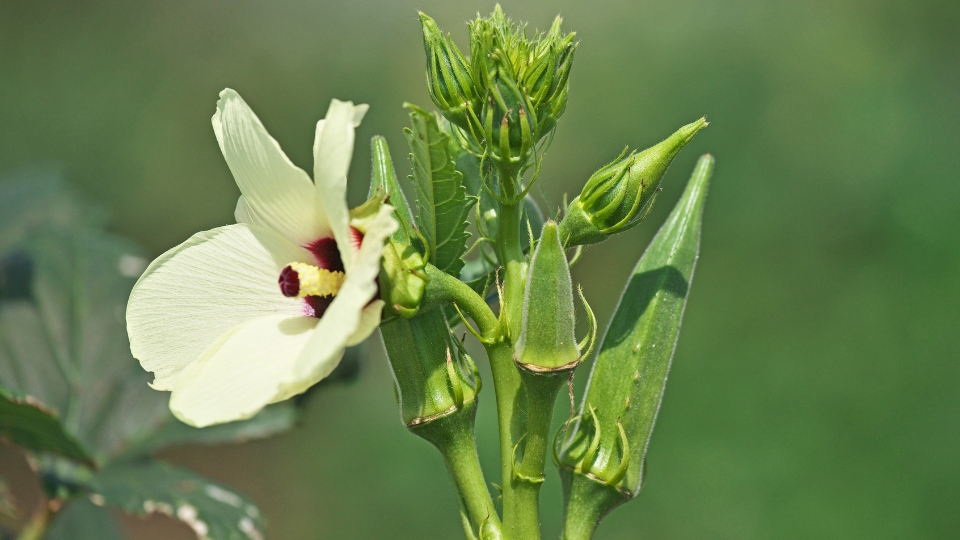
Unique Features Of The Emerald Okra Plant
Emerald Okra, scientifically known as Abelmoschus esculentus, boasts several distinctive characteristics that set it apart from other plants. Its lush foliage and bright, jewel-toned pods make it an eye-catching addition to any garden. The plant also yields delicate, hibiscus-like flowers, enhancing its visual allure. Furthermore, Emerald Okra plants are known for their resilience, thriving in various climates and soil conditions.
Importance Of Growing Emerald Okra
Growing Emerald Okra offers numerous benefits, making it a valuable addition to your garden. Whether you’re a home gardener or a commercial farmer, cultivating Emerald Okra can be rewarding. Here are some of the key reasons to consider incorporating these plants into your cultivation:
- Nutritional Value: Emerald Okra pods are rich in essential nutrients, including fiber, vitamins, and antioxidants, contributing to a healthy diet.
- Versatile Culinary Uses: The pods of Emerald Okra can be used in various dishes, from stews and soups to pickles and stir-fries, adding a unique flavor and texture.
- Aesthetic Appeal: The visually appealing foliage and pods of Emerald Okra can enhance the aesthetic appeal of your garden or farm, adding a pop of color and texture.
- Easy Maintenance: These plants are relatively low-maintenance, requiring minimal care and attention while offering a bountiful harvest.
- Climate Adaptability: Emerald Okra plants are known for their adaptability to different climate conditions, making them suitable for various geographical locations.
Understanding The Growing Requirements
Meet the growing requirements of the Emerald Okra Plant with tailored care and attention. Understanding the unique needs of this versatile plant is essential for thriving yields and overall plant health. A well-informed approach ensures successful cultivation, from adequate sun exposure to proper watering and soil requirements.
Understanding the Growing Requirements Cultivating Emerald Okra plants requires attention to specific growing conditions and care. Here are vital tips to comprehend Emerald Okra’s ideal climate, soil preparation, and fertilization.
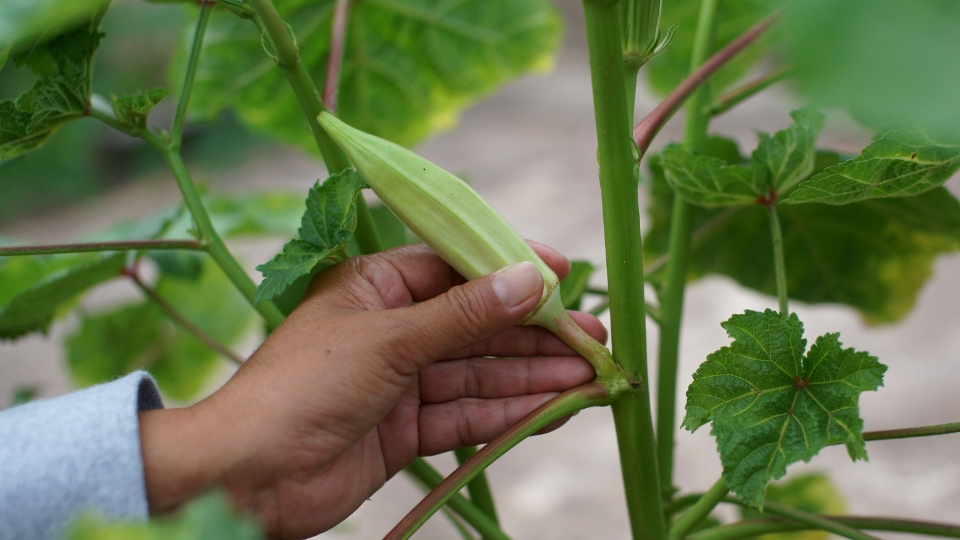
Ideal Climate For Emerald Okra Plant
Emerald Okra thrives in warm, humid climates with temperatures between 75°F and 90°F. These plants require at least 6-8 hours of direct sunlight daily, making them suitable for regions with ample sunshine. The ideal climate for Emerald Okra provides the necessary heat and sunlight for robust growth and fruiting.
Soil Preparation And Fertilization
Before planting Emerald Okra, prepare well-drained, loamy soil with a pH level between 6.0 and 6.8. Incorporating organic matter like compost or aged manure assists in improving soil structure and nutrient content. When planting, ensure the soil is adequately fertilized with a balanced fertilizer high in potassium, such as 10-10-10, to promote healthy foliage and fruit development.
Regularly supplement the soil with nitrogen-rich fertilizer during the growing season to stimulate continuous leaf production and fruiting. Avoid over-fertilization, as it can lead to excessive leaf growth at the expense of fruit production. By implementing these crucial growing requirements, you can foster optimal conditions for cultivating robust and high-yielding Emerald Okra plants.
Planting And Transplanting Process
For the successful growth of the Emerald Okra plant, it is essential to follow the planting and transplanting process carefully. Begin by selecting a suitable location with well-drained soil and ample sunlight. When transplanting, ensure the seedlings are placed at a proper depth and have sufficient spacing for optimal growth.
Sowing Seeds For Emerald Okra
Emerald okra is a delightful addition to any garden, and the planting process starts with sowing seeds. Follow these simple steps to ensure healthy, vibrant plants:
- Choose a sunny location with well-drained soil.
- Before sowing, enrich the soil with compost and organic matter to provide essential nutrients.
- Plant the seeds about 1 inch deep and 12-18 inches apart.
- Water the seeds gently but thoroughly. Ensure the soil remains consistently moist until the seedlings emerge.
- Once the seedlings have developed true leaves, thin them to ensure proper spacing for healthy growth.
Transplanting Emerald Okra Seedlings
Transplanting is a vital step in the growth of emerald okra, and it requires careful consideration. Here are the essential guidelines for successfully transplanting the seedlings:
- Choose a time when the seedlings are about 3-4 inches tall, and the last frost has passed.
- Prepare the transplant site by enriching the soil with organic matter and ensuring it is well-drained.
- Be mindful of the delicate roots, and gently remove the seedlings from their original containers.
- Plant the seedlings about 18 inches apart for proper air circulation and growth.
- Water the transplanted seedlings thoroughly to reduce transplant shock and encourage establishment in their new location.
Proper Watering Techniques
To ensure the healthy growth of your Emerald Okra plant, it’s crucial to water it properly. Be mindful not to overwater, as this can cause root rot. Water your plant consistently, ensuring the soil is moist but not waterlogged. Consider using a drip irrigation system for efficient watering.
Proper Watering Techniques for Emerald Okra When caring for your Emerald Okra plant, proper watering techniques are crucial for its growth and productivity. With its vibrant green pods, Emerald Okra thrives in warm climates and well-drained soil. Ensure your plant remains healthy and productive by following these essential watering guidelines.
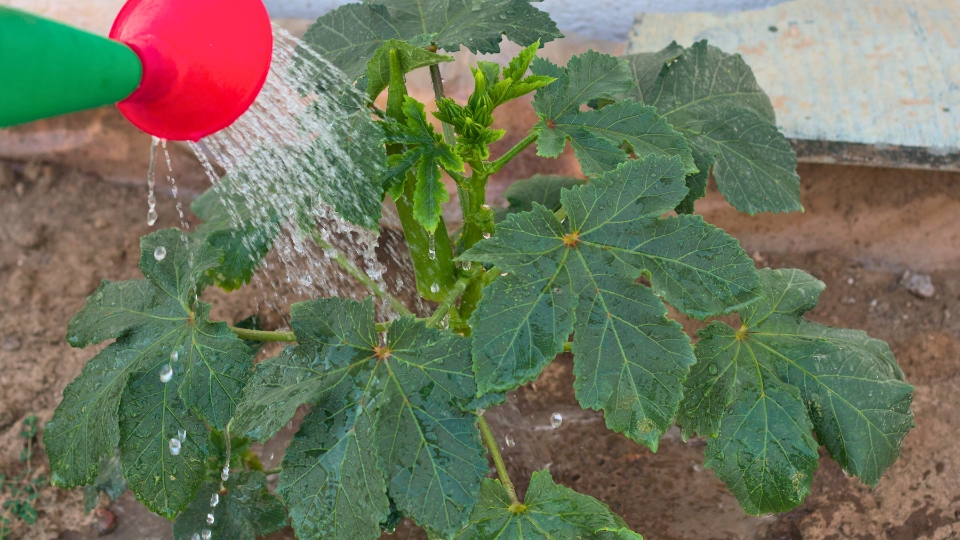
Watering Schedule For Emerald Okra
Establish a consistent watering schedule for your Emerald Okra to maintain optimal growth. Here’s a recommended watering schedule to keep your plant healthy and thriving:
- Seedling Stage: During the seedling stage, water the plant lightly every 2-3 days, ensuring the soil is consistently moist but not waterlogged.
- Established Plant: Gradually increase the water amount and frequency once established. Water the plant deeply weekly, allowing the soil to dry slightly between waterings.
Avoiding Overwatering Issues
Overwatering can lead to root rot and other detrimental effects on your Emerald Okra plant. Avoid overwatering by following these essential tips:
- Check Soil Moisture: Before watering, check the soil moisture by inserting your finger into the soil up to the first knuckle. Water only if the soil feels dry at this depth.
- Good Drainage: Ensure the pot or planting area has proper drainage to prevent water from accumulating around the roots.
- Monitor Weather Conditions: Adjust your watering schedule based on weather conditions. During periods of heavy rain, reduce watering to prevent waterlogged soil.
You can ensure your Emerald Okra plant’s successful growth and productivity by adhering to a consistent watering schedule and avoiding overwatering issues.
Nurturing And Maintenance
The proper nurturing and maintenance of the Emerald Okra Plant are essential to ensure a healthy and bountiful harvest. By following key practices such as pruning for optimal growth, effective pest control, and disease management, you can maximize the potential of your plants and enjoy a successful crop.
Let’s delve into these important aspects of nurturing and maintaining your Emerald Okra Plant.
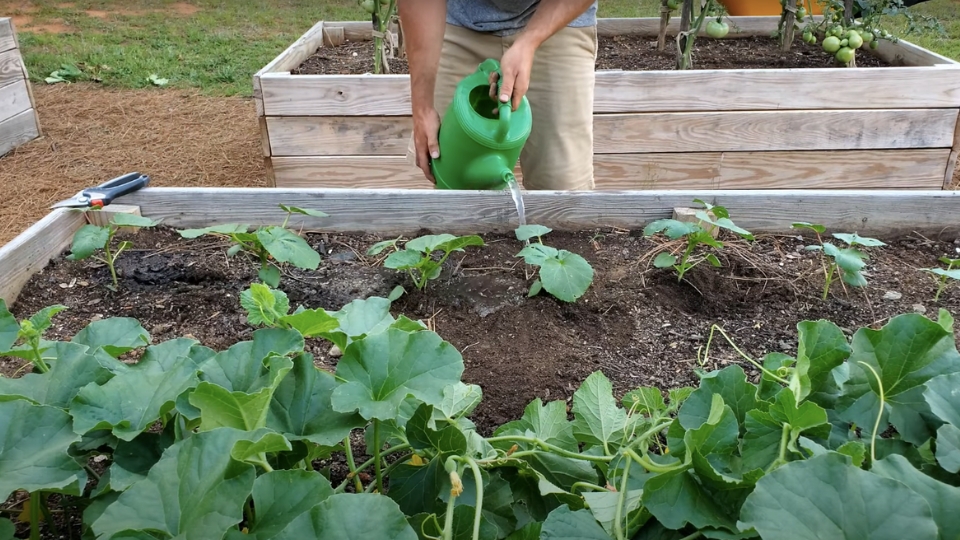
Pruning For Optimal Growth
Pruning the Emerald Okra Plant is crucial for promoting vigorous growth and productivity. Regularly removing damaged or diseased leaves and stems can optimize the plant’s energy and resources towards fruit production.
Pest Control And Disease Management
Pest control protects the Emerald Okra Plant from damaging insects and other pests that can compromise its health and yield. Implement preventive measures such as companion planting and organic solutions to prevent common pests. Similarly, keeping the plants well-drained and providing adequate ventilation can prevent disease. However, if diseases occur, promptly treat them with natural remedies to minimize their impact on your crop.
Maximizing Yield And Quality
Emerald Okra is a delightful addition to any vegetable garden, offering a unique visual appeal and a bounty of nutritious pods. Maximizing the yield and quality of the Emerald Okra plants requires proper care during growth, attentive harvesting techniques, and appropriate preservation.
By following these tips, you can ensure a plentiful harvest of high-quality Emerald Okra pods.
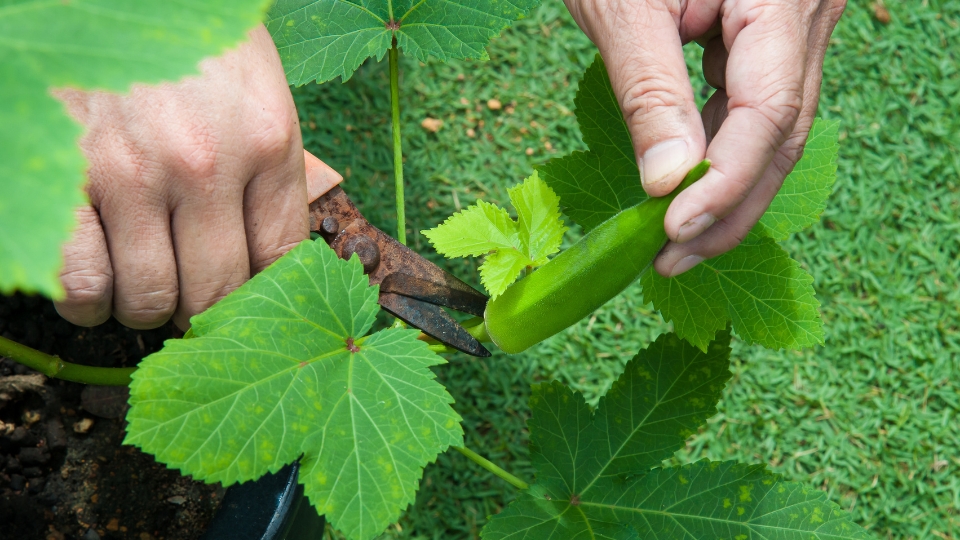
Tips For Harvesting Emerald Okra
Harvesting Emerald Okra at the right time ensures tender and flavorful pods. Use the following tips for a successful harvest:
- Check Frequently: Harvest okra pods every 2-3 days to ensure they are picked at the optimal size of 3-4 inches. Overgrown pods can be tough and fibrous.
- Use Pruning Shears: To avoid damaging the plant, use clean, sharp pruning shears to cut the pods from the stem.
- Harvest in the Morning: Pods are the most tender in the morning, so it’s best to harvest them now.
Preserving And Storing Emerald Okra Pods
To maintain the quality of your abundant Emerald Okra harvest, it’s essential to preserve and store the pods correctly:
- Quickly Process: Process the harvested okra as soon as possible to maintain its freshness. Trim the stem end, and blanch the pods in boiling water for 3-4 minutes, then immediately transfer them to an ice bath to stop the cooking process.
- Freezing: Once blanched and dried, place the pods in freezer-safe bags or containers and store them in the freezer for up to 12 months.
- Canning: If you prefer canned okra, follow a pressure canning recipe and ensure the pods are adequately preserved for long-term storage.
- Dehydrating: Dehydrate okra slices to create crispy snacks or additions to soups and stews. Store the dehydrated okra in airtight containers in a cool, dry place.
Frequently Asked Questions On Emerald Okra Plant
How Big Do Emerald Okra Plants Get?
Emerald okra plants can grow up to 4-6 feet tall. They are a medium-sized variety of okra, suitable for home gardens. Their size makes them easy to manage and harvest.
What Is The Difference Between Clemson Spineless And Emerald Okra?
Clemson Spineless okra has smooth, spine-free pods, while Emerald Okra has ridged pods with spines.
What Is The Best Month To Plant Okra?
The best time to plant okra is in late spring, around April or May. This allows the plant to thrive in the warm weather, resulting in a better harvest. Additionally, okra requires full sunlight and well-drained soil for optimal growth.
Does Okra Like Full Sun Or Shade?
Okra thrives in full sun, requiring at least 6 hours of direct sunlight. It does not do well in the shade.
Conclusion
The emerald okra plant is a valuable addition to any garden. Its vibrant green pods, high nutritional content, and versatility make it a must-have for amateur and seasoned gardeners. With the right care and attention, this plant can provide a bountiful harvest and bring joy to any home.
Video Source: https://www.youtube.com/watch?v=RU7cBD14iQ8&t=6s

